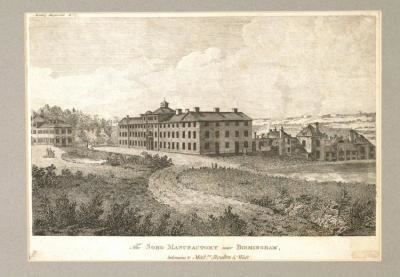 | ||
The Soho Manufactory (grid reference SP051890) was an early factory which pioneered mass production on the assembly line principle, in Soho, Birmingham, England, at the beginning of the Industrial Revolution. It operated from 1766-1848 and was demolished in 1863.
Contents
- James watt matthew boultons soho manufactory jigsaw puzzle screencast hd
- Beginnings
- Production
- Steam engines
- Later
- References
James watt matthew boultons soho manufactory jigsaw puzzle screencast hd
Beginnings
The factory was established by the "toy" manufacturer Matthew Boulton and his business partner John Fothergill. In 1761, they leased a site on Handsworth Heath, containing a cottage and a water-driven metal-rolling mill. The mill was replaced by a new factory, designed and built by the Wyatt family of Lichfield, and completed in 1766. The cottage was later demolished and Boulton's home (Soho House) was built on the site, also by the Wyatts.
Water was drawn from Hockley Brook.
Production
The Manufactory produced a wide range of goods from buttons, buckles and boxes to japanned ware (collectively called "toys"), and later luxury products such as silverware and ormolu (a type of gilded bronze).
Steam engines
In 1782, it became the first site with a Watt steam engine with a sun and planet gear. It was also home to the first steam-powered mint, whose presses were subsequently used at the first Birmingham Mint.
Later
In later years, the Manufactory was served by canal at Soho Wharf, at the end of the short Soho Branch of the Birmingham Canal Navigations' Soho Loop.
The manufactory was demolished in the middle of the 19th century and the site used for housing.
